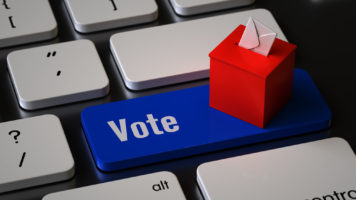Post-Presidential Campaign Email Use; Trump Sells Souvenirs, Gets High Read Rates
We recently responded to a press inquiry about where presidential campaign email lists go after the election. The reporter published some of what we told him in this article, and since the bullet points provide such good context for today’s article we have included them again here. But perhaps more importantly, we wish to expand on them with some new information about how Trump is now using his email lists. You see, if a candidate’s domain stays active, we can see that activity in our Competitive Tracker tool.
So, where does an email list go after the election? Do they still have value?
- Candidate email lists (and related activity/engagement data) definitely do have value — and lives — beyond the specific election, candidate or issue for which they were originally collected.
- Sometimes they are sold or otherwise transferred to other political candidates or causes, where they can be used at will, because the email opt-in/permission provisions of the Federal CAN-SPAM regulation do not apply to political email.
- Sometimes the lists — and the email sending domains used for a particular political campaign — stay active, such as when:
- The candidate lends them to another candidate’s campaign (e.g., Chris Christie did this for Trump)
- The candidate transfers the list to another political entity for use in supporting their causes (Obama’s list — about 14 million — sits with the Democratic National Committee, and was actively mailed throughout the 2016 campaign)
- He or she uses them in a separate campaign for another office (e.g., Rand Paul, Ted Cruz and Marco Rubio all applied the lists collected for their Presidential Primary runs to their subsequent Senate re-election campaigns).
- The candidate uses them to specifically support other national or local candidates or issues (e.g., Bernie Sanders has done this).
- The candidate uses them to support one or another public cause with which s/he is personally associated (Ben Carson and Carly Fiorina have both done this with their Presidential Primary lists).
The value of these actions is questionable. Compared to permissioned email, non-permissioned email has a much higher likelihood of being blocked as spam, and related reader engagement tends to be below average. The older the list, the more problematic it can be. However, political mailers seem to believe that the overall advantage of a readily available audience outweighs its risks.
Trump leverages his email list to sell souvenirs
Now an additional example of “post-campaign leveraging of a candidate’s email audience” has come to light. I recently began seeing in my personal email inbox, marketing messages selling Trump memorabilia. This activity isn’t like the couple of post-election emails the Clinton campaign sent, offering leftover Hillary posters and pins. I kept getting Trump’s email, so I took a look at his ongoing email activity as eDataSource tracks it. It’s pretty surprising, and — to say the least — uncommon in American presidential communications. Our President-elect appears to be using email to sell souvenirs.
In the thirty days ending December 13th, of the 174 email campaigns we saw deployed by the various Trump domains, 33 of those campaigns (19%) were solely devoted to selling swag at “The Trump Store.”
- These emails were deployed to audiences ranging from 139K-1.4M (average = 547K)
- They had inbox performance ranging from 48-89% (average = 73%)
- The messages had read rates ranging from 9-35% (average = 23%). That’s pretty strong performance.
- They variously referenced “Black Friday,” “Cyber Monday” and “Deals of the Day” in their subject lines (see below).
- Their calls-to-action say things like “Show your support for the 45th President of the United States, and stock up on swag now.”
Here are some examples of best performers:
[table id=10 /]
It’s clear that this activity is not intended merely for disposal of leftover campaign swag. Two of these subject lines reference “NEW.” Two others offer special Christmas ornaments; not something you’d expect from a campaign that ended on November 8th. This is a retail business that’s being actively merchandised and promoted, even via email. And from what we can see, it may be doing very well.
Happy shopping!









